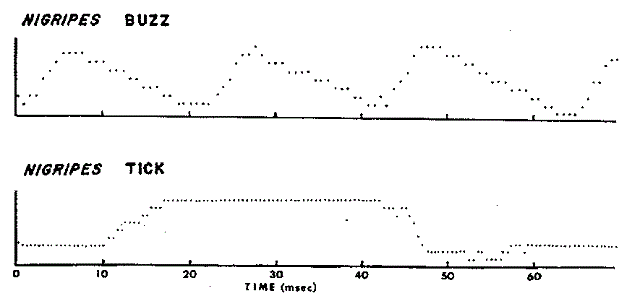



Movements of forewings during calling, plotted frame-by-frame from high-speed motion picture film. The higher the dots the more the wings are apart, and the lower the dots the more nearly closed are the wings. The upper graph shows forewing movement during three complete wingstroke cycles from the "buzz" part of the song. Morris and Walker (1976) concluded that the more rapid opening stroke produces a "minor pulse train" and the slower closing stroke produces a "major pulse train (these two types of trains alternate during a buzz).
The lower graph shows forewing movement during the production of a tick: the wings are opened, held open, and then closed. The closure produces the loud "tick."
This method of determining how the forewings move during calling is described by Walker et al. (1970).